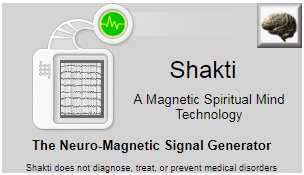
Main
|
. |
Shakti Spiritual Technology – The Principles
Shakti is based on the Koren Helmet (The God Helmet), a technology that’s been studied in many laboratory experiments. It’s also appeared several times in television documentaries about near-death experiences, alien abductions, and altered-states of consciousness. Art Bell has discussed it on his national radio show, and it has been given the nickname “The God Helmet”. The first generation of this technology was developed by Dr. Michael Persinger and Stan Koren. Shakti approximates the Koren helmet, but does not duplicate it. That requires 8 independent channels, while Shakti uses two. A device that replicates the “God Helmet” experiment’s stimulations can be found HERE.
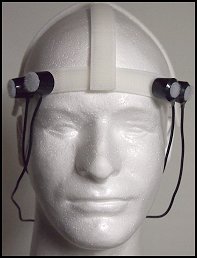
The magnetic fields get stronger and weaker, mimicking patterns that appear in EEG traces. Although they’re still magnetic fields, they are also ‘magnetic signals’, and that’s what we’ll be calling them.
Altered states are more likely when the sessions are done in silence and darkness. However, there are several ways of using Shakti that don’t need sensory deprivation. If you use Shakti for mood enhancement or meditation enhancement, then you don’t need sensory deprivation, though a relaxed environment is still better than one with noise or bright light.
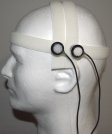 Interestingly, laboratory studies have found that the effects are most pronounced during times of geomagnetic quiet (Click HERE to see the current levels). However, you don’t need to do your sessions under perfect conditions in order for Shakti to work. The right conditions help it work better.
Interestingly, laboratory studies have found that the effects are most pronounced during times of geomagnetic quiet (Click HERE to see the current levels). However, you don’t need to do your sessions under perfect conditions in order for Shakti to work. The right conditions help it work better.
This technology can enhance your meditation, yoga, or other spiritual practice when Shakti sessions are done so that they end about an hour before your spiritual practice begins. You don’t need sensory deprivation for this kind of Shakti session.
|
There is more to say about Shakti, but the best way to fully understand what it can do is to read the rest of this page, and check out the online demo for the software, which is packed with information about how to use it, and what kind of effects each signal can produce, as well as how to set up your audio, where to put the coils and more. There are ‘quick start’ sessions as well as basic and advanced session designs.
What The Signals Do.
Shakti uses audio files to play the signals. The ‘sounds’ have the same shape as an EEG signal – one whose appearance shows the activation of a particular structure (brain part). The magnetic coils are plugged into the sound card, just like a pair of speakers. When the audio file is played, the coils produce magnetic fields whose shape matches the shape of the original EEG trace.
When the signals are played and the coils are in place, the coils put out magnetic fields that match the original EEG trace. To use Shakti effectively, you need to understand something about a few brain parts.
Let’s look at four of the sources for the signals – the amygdala, the hippocampus, the caudate nucleus, and the septum. There are other signals based on different principles, included in Shakti For Windows. These include the whole range of common frequencies (using the Function Generator included in the software), as well as some based on lab experiences and discoveries that don’t ‘target’ only one brain part. You have two of each, one on each side.
__________________
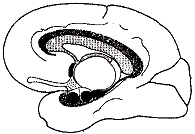
The AMYGDALA is an emotional structure.
On one side, it supports a broad range of positive emotions, such as elation (along with many other functions). It also functions to infuse our experiences with a sense of meaningfulness.
On the other side, it supports a broad range of negative emotions, most importantly fear (along with many other functions). It can color our experiences with a sense of meaninglessness. (Based on previous work with the amygdala using its signal.)
__________________
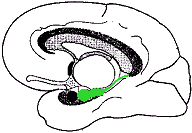
The HIPPOCAMPUS is a cognitive, or ‘thinking’ structure.
On the one side, it supports silent, non-verbal ways of thinking, positive thoughts and expectations, spatial perceptions, and several kinds of inner imaging, including imagination, visualization, and pictorial memories (along with many other functions).
On the other side, it supports verbal skills, negative thoughts and expectations, and logical thought (along with many other functions). Based on previous work with the hippocampus using its signal.
__________________
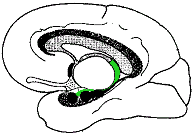
The CAUDATE NUCLEUS is a somatic or ‘bodily’ structure.
On one side, it seems to support arousal (including anger, excitement, sexual desire, and a sense of anticipation).
On the other, it supports relaxation, calm, and even lethargy.
Based on preliminary reports from a few people using this signal.
__________________
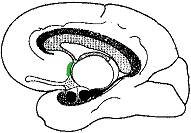
The SEPTUM is one of the brain’s “Pleasure Centers”. It’s one of the few brain parts most people have actually heard of.
It supports the experience of pleasure, with a special emphasis on sexual pleasure (including Orgasm).
Preliminary reports from a few people are consistent with its known role in mediating sexual enjoyment, but when its applied over the frontal lobes, it can help people feel relaxed.
__________________
Each of these structures has a signal that belongs only to it. The two signals appear on an EEG (An electroencephalograph. The signals that come out of these are also called ‘brain waves’.)
An EEG signal is a record of an electrical signal. Shakti begins when these EEG signals are converted into audio files that are ‘played’ into magnetic coils. The coils turn the audio output into magnetic signals.
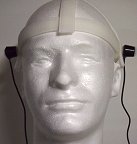
The magnetic signals are applied to the head at very low strength (close to what comes out of a telephone receiver when you’re holding it next to your ear). Many of the signals are short bursts, followed by intervals of silence. The low strength is used because experiments have shown that these are the levels that work best for this kind of neural technology.
Each signal speaks a language that only one brain structure understands.
So only the one brain part responds. It communicates with other parts, of course, and they, in turn, also start responding.
You have two of each of these structures – one on each side of the brain.
Shakti is applied using the structures own signal, but only over the side of the head where it supports something positive, or over both sides equally.
For the amygdala, it’s almost always on the left, and for the hippocampus, it’s almost always on the right.
For the septum and the caudate nucleus, its matter of personal preference which side is best.
When these structures respond, they put the person in a positive altered state of consciousness.
Even though we can apply the wave forms “symmetrically” (over both sides simultaneously), your brain probably doesn’t work symmetrically. For example, if you live with low self-esteem, you probably use your right side more.
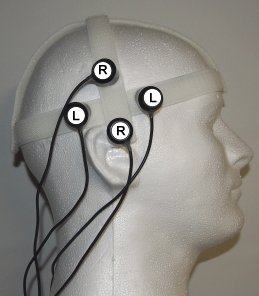 If you’re prone to irritability, your brain might be more active on the left side. If you’re very emotional, your amygdala’s activity might offset your hippocampal activity a bit. If you think in pictures, you might have a busy right hippocampus. If you think in words, you might have a busier left hippocampus.
If you’re prone to irritability, your brain might be more active on the left side. If you’re very emotional, your amygdala’s activity might offset your hippocampal activity a bit. If you think in pictures, you might have a busy right hippocampus. If you think in words, you might have a busier left hippocampus.
This means that some session designs may not be as effective as others for you.
The things that affect the way individual brains respond to Shakti often elate to long-standing, even lifetime, personality traits. If targeted structure has a history of low activity, Shakti might produce quite a marked experience for that person.
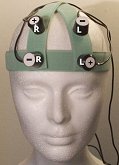 These are not the only signals. There is one that tends to alter the “binding factor“ for human consciousness, based on years of lab work. This signal has produced some profound experiences.
These are not the only signals. There is one that tends to alter the “binding factor“ for human consciousness, based on years of lab work. This signal has produced some profound experiences.
There is also the recent addition of a signal derived from the Septum, the Brain’s “Pleasure center”. Initial reports indicate that its effects are consistent with the Septum’s function – the capacity for pleasure, especially sexual pleasure, though it has also produced reports or relaxation when used over the frontal lobes.
What you experience depends on who you are and how you choose to use Shakti.
If you want to try to have intense experiences, you do one-hour sessions, no more than one every three weeks. These sessions need sensory deprivation, including silence and darkness. You can do sessions every three days for 18 days (six sessions) and then stop for three weeks. Most people choose this way of using Shakti. Read more about this session schedule.
From a BBC report: “How does Dr. Persinger induce artificially religious experiences in his patients?
“Dr. Persinger has designed a helmet that produces a very weak magnetic field of between ten nanoteslas and one microtesla over the temporal lobes of the brain. This is placed on the subject’s head, and they are placed in a quiet chamber while blindfolded. So that there is no risk of ‘suggestion’, the only information that the subjects are given is that they are going in for a relaxation experiment. Neither the subject nor the experimenter carrying out the test has any idea of the true purpose of the experiment. In addition to this, the experiment is also run with the field switched both off and on. This procedure Dr. Persinger claims will induce an experience in over 80% of test subjects.”
From New Scientist (4/21/01)
“For several years, Persinger has been using a technique … to induce all sorts of surreal experiences in ordinary people (New Scientist, 19 November 1994, p 29). Through trial and error and a bit of educated guesswork, he’s found that a weak magnetic field–1 microtesla, which is roughly that generated by a computer monitor– anticlockwise in a complex pattern about the temporal lobes will cause four out of five people to feel a spectral presence in the room with them.”
_________
NOTE: The Four-Coil Shakti is no longer available.
You can see the Eight-Coil Shakti here.
.
.
.
.
.
.
.

 Unlike Shakti Signals (simple frequencies).
Unlike Shakti Signals (simple frequencies).